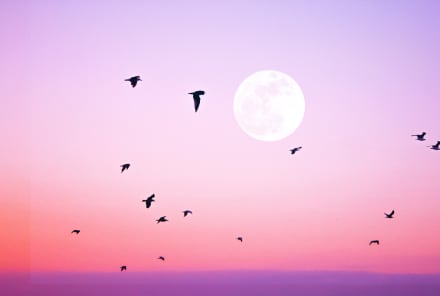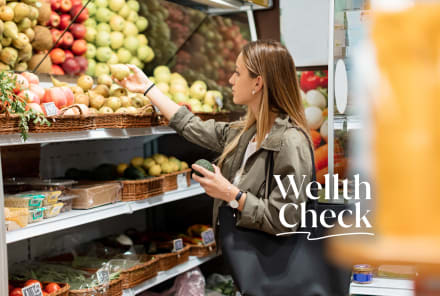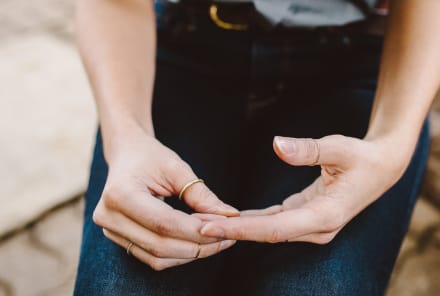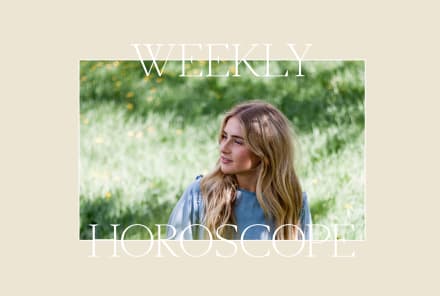Advertisement
Today, kale is on the brink of reaching its cultural saturation point. Us Weekly has covered the veggie in a feature, “Stars Who Love Kale.” Kale Caesar salads are the “it” food on farm-to-table menus, and kale has become a hipster statement, stitched on Beyoncé’s sweatshirt.
And America is eating it up: According to the Department of Agriculture, U.S. kale production increased by nearly 60 percent between 2007 and 2012. Kale is for sale at Wal-Mart. Even McDonald's is jumping on the cruciferous kale bandwagon and began testing kale breakfast bowls in nine California locations in May.
How did this happen? Not so long ago, salads were made of iceberg lettuce and broccoli was an exotic, acquired taste. For the last few years, I've been working on a book about the millennial generation and food culture, and it got me wondering, why did kale become the epitome of cool?
You’ve Got Kale
The reality is that kale is nothing new. It has been cultivated around the globe for more than 2,000 years. Before 2012, rumor has it that the largest buyer of kale was Pizza Hut, who used the curly leaves as décor along their salad bar.
But now, “anyone and everyone is growing it," says Charles Muranaka, executive vice president of Muranaka Farm, Inc., the largest shipper of bunched kale in the U.S. "The market is pretty saturated.”
So someone has got to be profiting from it.
Through my research, I’ve found that it’s not uncommon for fruits and vegetables to have public relations money behind them.
Exhibit A: Orange juice was created by ad agency Lord & Thomas to help the California Fruit Growers Exchange utilize an over-abundance of citrus trees in 1907. The concept “Drink an Orange” made OJ a staple morning drink.
Similarly, one woman, Lynda Resnick, is credited with giving new life to pomegranates, creating PomWonderful through a similar viral marketing campaign, tapping into her celeb-stocked Rolodex. She was so successful that California’s acres of pomegranates have multiplied from 2,000 to 30,000 acres.
I became curious: Who is behind the rise of kale?
The Kale Hard Truth
A quick Google search about the popularity of kale reveals the name Oberon Sinclair, founder of My Young Auntie PR in New York City. With a client list that includes Hermès, Vivienne Westwood, and Jack Spade, Sinclair reports that she was hired by the American Kale Association (AKA) in 2013 to, well, make kale cool.
I thought I had solved the mystery. Not so much.
Sinclair is cited as the mastermind behind kale in publications around the world. “Meet the Woman Who Made Kale Famous,” they write, calling Sinclair “the woman responsible for it all and the representative of kale across the nation.”
With a sturdy client list in the fashion and music industries, Sinclair amplified the plant with custom t-shirts, pricy salads and celebrity endorsements.
“My approach was relatively simple,” Sinclair explained to me, via email. “I sought to educate consumers on the benefits of a product via guerrilla marketing. I literally put it on chalkboards around Manhattan and on the menus of cool restaurants, the Fat Radish being one of them,” another My Young Auntie client, “and the ‘trend’ escalated from there.”
I thought I had solved the mystery. Celebrity-laden PR guru markets kale and gets it in the hands of paparazzi-followed friends, on restaurant menus, and in the fashion world. End of story, right? Not so much.
Later that day, I had a call scheduled with Dr. Drew Ramsey, assistant professor of clinical psychiatry at Columbia University, the founder of National Kale Day and author of 50 Shades of Kale, a cookbook that boasts “fifty enticing new ways to enjoy one of Mother Nature's hottest properties.”
I figured it was worth getting his opinion on the rise of kale, though I thought I’d already solved the riddle.
“I’ve heard that before,” Ramsey said on the phone about Sinclair’s role in elevating kale. But, he countered, “Have you talked to anyone at the American Kale Association? I’m not sure they exist.”
I paused in confusion. I had assumed the American Kale Association was a group of kale farmers. Kale sales go up, good for the people who grow it, right?
In fact, the exact opposite is true: Many kale farmers are actually suffering from kale’s sudden popularity. “The demand is rising, but the supply is outpacing it,” explained Muranaka, the executive vice president of, again, the largest shipper of bunched kale in the nation.
I began to wonder who was really behind the American Kale Association.
Ashley Rawl, the director of sales and marketing at Walter P. Rawl & Sons, a large kale farm in South Carolina, told a similar story.
“A lot more people have gotten in on the business,” he explained. “I’m sure there are some farmers who are winning, who never grew kale before. But those of us who have been in the greens business all of our life, [the demand] has changed the dynamics of [the business].”
Not only has more competition bombarded the kale landscape, but eating kale raw, Rawl said, means farms have had to develop intensive food safety measures for a green that used to just sit below plastic bowls of ice on buffet tables.
With the farmers battling an increasingly competitive market, and My Young Auntie claiming that they were paid to make kale cool, I began to wonder who was really behind the American Kale Association.
Seeing Green
Clicking around the American Kale Association website reveals little. A well-linked loop runs from their website to Facebook page to Twitter account (where they have more than 15,000 followers). Posts go up on a somewhat regular basis, but contact information is omitted.
A domain search for their homepage discloses the site was created via GoDaddy through a third party, Domains by Proxy, whose website announces: “Your identity is nobody's business but ours.”
So I asked: Who is the American Kale Association?
So I went back to my original source to ask, quite simply: Who is the American Kale Association? A My Young Auntie staffer replied that AKA has “been great collaborators, but prefer to remain behind the scenes, focusing on the growth and supply, and providing the most accurate, updated information.”
“To clarify, the AKA are kale farmers/producers?” I wrote.
“Yes, to your question about AKA,” the staffer responded.
I called the National Farmers Union, figuring if a group of growers and producers had paid a PR firm, this national union of farmers would be able to point me to some growers who were involved.
“I’ve never heard of the American Kale Association,” replied Barbara Patterson, government relations representative at the National Farmers Union. She went on to tell me that if there was, in fact, a group representing kale farmers, it would probably be the United Fresh Produce Association. So I contacted them.
“We are not familiar with the American Kale Association,” wrote United Fresh’s Mary Coppola, senior director of marketing communications, in response to my inquiry.
Someone has to know who these people are, I reasoned. Following the trail, I reached back out to the actual kale farmers.
“I’ve never heard of them,” Muranaka (VP of the largest shipper of bunched kale in the nation) told me. And if there were a union of kale farmers, would he know of them? “Sure,” he replied emphatically.
I received similar responses from other directors at large kale farms across the country.
Don't Kale My Vibe
I went back to the drawing board. Maybe I was missing something.
In 2009, Bon Appétit ran a recipe for kale chips by Dan Barber, a renowned New York City chef. In 2010, Dr. Oz introduced kale to his viewers. Then, in 2011, Gwyneth Paltrow baked kale chips on Ellen. The following year, Bon Appétit named it the year of kale while Time listed kale as one of the top 10 food trends of 2012. In 2013, National Kale Day launched.
After weeks of investigation later, the mystery of the American Kale Association still plagued me.
Perhaps it was the perfect kale storm: Gwyneth and Ellen promoted kale along with their own dietary agendas. Millennials decided to use their discretionary incomes on Juice Generation instead of cable. Gluten-free, Paleo, and vegan dieters all hailed the permissible vegetable.
Dr. Drew Ramsey began to host kale celebrations where people adorn themselves in kale and dance in the streets (true story). Celebrities began to talk about kale, like their new Beats headphones. All together, kale catapulted into popular culture in a way that other healthful foods have only scratched at in years prior.
Though after weeks of investigation later, the mystery of the American Kale Association still plagued me. Oberon and I had another call, and I asked, "Are you behind the American Kale Association?"
"Yes," she said simply.
My editors at mindbodygreen called her again to confirm. "It's my proudest campaign ever," she told them. "I've been trying to convert people for years to eat in a healthy way. I've always loved [kale]. It is an amazing vegetable."
Why, they pressed, why would you take the time to create this made-up organization? "I'm a punk at heart," she replied. "I wanted to do something differently — and I did." She figured that people would have been less interested in kale if they'd known a PR firm was behind it.
However unconventional her efforts may have been, Sinclair certainly deserves some street cred for making kale a cultural icon, and for that I salute her.
Which superfood is ripe for a comeback next? Just last week, an email popped up in my inbox from a PR firm, “Sample innovative recipes, sip nutritious juices, and get to know the bold superfood, broccoli rabe.” While I’m not sure it has the same sweatshirt appeal as kale, it’s certainly a veggie that could use a makeover.
Portlandia spoofed the rise of certain veggies in The Celery Incident — check it out above!
Related reads:
Illustration by Chloe Bulpin, mbg creative
Watch Next
Enjoy some of our favorite clips from classes
Enjoy some of our favorite clips from classes
What Is Meditation?
Mindfulness/Spirituality | Light Watkins
Box Breathing
Mindfulness/Spirituality | Gwen Dittmar
What Breathwork Can Address
Mindfulness/Spirituality | Gwen Dittmar
The 8 Limbs of Yoga - What is Asana?
Yoga | Caley Alyssa
Two Standing Postures to Open Up Tight Hips
Yoga | Caley Alyssa
How Plants Can Optimize Athletic Performance
Nutrition | Rich Roll
What to Eat Before a Workout
Nutrition | Rich Roll
How Ayurveda Helps Us Navigate Modern Life
Nutrition | Sahara Rose
Messages About Love & Relationships
Love & Relationships | Esther Perel
Love Languages
Love & Relationships | Esther Perel


















